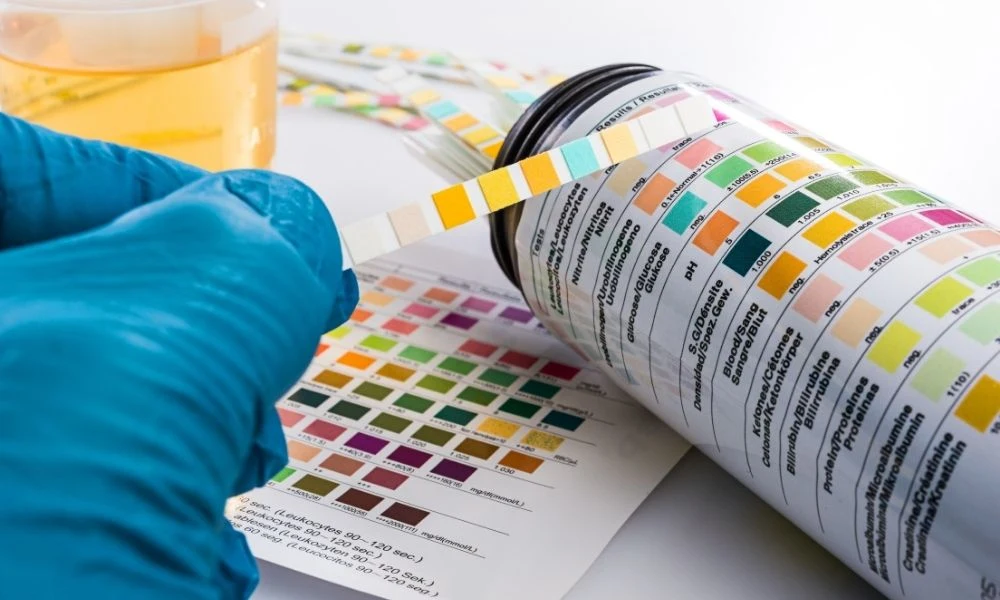Drug testing in schools is essential for student well-being and preventing drug abuse. Educational institutions must implement comprehensive drug testing programs to address the growing concerns about substance abuse among young individuals.
This article explores the significance of drug testing guides for schools in promoting a safe and healthy educational environment.
By providing guidance and resources, these guides empower schools to develop and implement effective drug testing policies that align with best practices and legal requirements, while respecting the privacy and rights of students.
Key Takeaways
- Drug testing in schools promotes a safe and supportive environment for students, enhancing their well-being and academic achievement.
- It helps identify and deter substance abuse, preventing harm to physical and mental health.
- Implementing drug testing programs allows for early intervention and support for students struggling with substance abuse.
- Regular testing creates a safer environment by reducing the presence of drugs on campus and can improve students’ focus and cognitive abilities, leading to enhanced academic performance.
Importance of Drug Testing in School Health Programs
Drug testing plays a crucial role in ensuring the effectiveness and success of school health programs. By implementing drug testing protocols, schools can create a safe and supportive environment for students, promoting their overall well-being and academic achievement.
The importance of drug testing lies in its ability to identify and deter substance abuse among students, preventing potential harm to their physical and mental health. It also serves as a deterrent, sending a clear message that drug use will not be tolerated within the school community.
Additionally, drug testing can provide early intervention opportunities for students who may be struggling with substance abuse, allowing them to access the necessary support and resources to address their issues.

Benefits of Implementing Drug Testing in Schools
Implementing drug testing in schools offers numerous benefits for the overall well-being and academic success of students. Here are four key advantages of incorporating drug testing programs in educational institutions:
- Deterrence: Drug testing acts as a deterrent, discouraging students from engaging in substance abuse. The fear of being caught can influence their decision-making, promoting a drug-free environment.
- Early Intervention: Regular testing allows for early identification of students who may be experimenting with drugs or struggling with addiction. This enables schools to intervene promptly and connect these students with appropriate support services.
- Student Safety: Drug testing helps create a safer environment by reducing the presence of drugs on campus. This can minimize the risk of drug-related incidents, such as violence, accidents, or impaired decision-making.
- Academic Performance: By discouraging drug use, testing programs can improve students’ focus, concentration, and cognitive abilities, leading to enhanced academic performance and achievement.
Implementing drug testing in schools not only contributes to the well-being of students but also fosters a positive and conducive learning environment.
Key Considerations for Developing Drug Testing Policies in Schools
When developing drug testing policies in schools, it is essential to carefully consider various factors to ensure their effectiveness and adherence to ethical guidelines.
One key consideration is the purpose of the drug testing program. Schools should clearly define their objectives, whether it is to deter drug use, identify students who may need intervention, or promote a healthy and drug-free environment.
Another important factor is the selection of the target population for testing. Schools should identify the specific groups of students that will be subject to drug testing, such as athletes, students involved in extracurricular activities, or those with a history of substance abuse.
Additionally, the frequency and method of testing should be determined, taking into account practicality, cost-effectiveness, and privacy concerns.
It is crucial to involve all stakeholders, including students, parents, teachers, and administrators, in the development and implementation of drug testing policies to ensure transparency and support.
Types of Drug Testing Methods for Schools
One essential aspect to consider when developing drug testing policies in schools is the selection of appropriate types of drug testing methods. Implementing the right drug testing method is crucial for accurately detecting substance use among students and maintaining a safe and healthy school environment.
Here are four types of drug testing methods commonly used in schools:
- Urine testing: This method is the most common and cost-effective option. It detects recent drug use and provides a reliable indication of substance abuse patterns.
- Saliva testing: This method is non-invasive and can detect recent drug use. It is particularly useful for detecting recent marijuana use.
- Hair testing: This method provides a longer detection window, typically up to 90 days, making it effective for identifying chronic drug use.
- Sweat patch testing: This method involves placing a patch on the skin to collect sweat, which can then be analyzed for drug metabolites. It provides continuous monitoring over an extended period.
Steps for Conducting Effective Drug Testing in Schools
To ensure the successful implementation of drug testing in schools, it is imperative to follow a series of steps designed to maintain the integrity and effectiveness of the process. These steps are crucial for creating a safe and healthy environment for students.
Firstly, it is essential to establish clear policies and guidelines regarding drug testing. This includes determining the frequency of testing, the substances to be tested for, and the consequences of a positive result. Clear communication with students, parents, and staff is also vital to ensure everyone understands the purpose and procedures of the drug testing program.
Secondly, schools must select a reliable and certified drug testing provider. This ensures accurate and consistent results that can be trusted by all parties involved. The provider should have experience working with schools and be familiar with the specific needs and challenges of the educational setting.
Thirdly, proper training should be provided to staff members involved in administering the drug tests. This includes training on how to handle specimens, maintain confidentiality, and interpret test results. Staff members should also be trained to provide support and resources for students who test positive for drugs.
Lastly, schools should regularly evaluate and review their drug testing program to ensure its effectiveness. This includes monitoring the impact of the program on student behavior and academic performance, as well as seeking feedback from students, parents, and staff.
Addressing Concerns and Challenges in Implementing Drug Testing Programs in Schools
Addressing concerns and challenges in implementing drug testing programs in schools can be a complex and multifaceted task. It is important for schools to carefully consider the potential benefits and drawbacks of implementing such programs.
Here are four key considerations to keep in mind:
- Privacy concerns: Schools must ensure that students’ privacy rights are protected throughout the drug testing process. This includes implementing strict protocols for collecting and handling samples, as well as limiting access to test results.
- Cost implications: Drug testing programs can be expensive to implement and maintain. Schools should carefully assess their budgetary constraints and explore potential funding sources, such as grants or community partnerships.
- Legal considerations: Schools must navigate the legal landscape surrounding drug testing in schools, including compliance with federal and state laws. It is crucial to consult legal experts to ensure that the program is implemented in accordance with all applicable regulations.
- Parental consent and involvement: Involving parents in the decision-making process and obtaining their consent is essential. Schools should communicate clearly with parents about the purpose and procedures of the drug testing program to address any concerns or questions they may have.
Frequently Asked Questions
How Can Drug Testing in Schools Help to Create a Safer and Healthier Environment for Students?
Drug testing in schools can play a significant role in creating a safer and healthier environment for students. By implementing drug testing programs, schools can identify students who may be using drugs and intervene early to provide necessary support and resources. This can help prevent substance abuse, reduce drug-related incidents, and promote overall student well-being.
Additionally, drug testing can serve as a deterrent, discouraging students from engaging in drug use and promoting a culture of accountability and responsibility in the school community.
Are There Any Potential Drawbacks or Negative Consequences Associated With Implementing Drug Testing in Schools?
There are potential drawbacks and negative consequences associated with implementing drug testing in schools.
One concern is the invasion of privacy for students.
Drug testing can also create a stigma and sense of distrust among students, leading to a hostile school environment.
Additionally, drug testing may not be an effective deterrent for substance abuse, as students may simply find other ways to evade detection.
It is important to carefully consider these factors before implementing a drug testing program in schools.
What Are Some Important Factors to Consider When Developing Drug Testing Policies for Schools?
When developing drug testing policies for schools, there are several important factors to consider.
First and foremost, it is crucial to establish clear objectives for the testing program, such as deterring drug use or identifying students in need of intervention.
Additionally, the chosen testing method should be reliable and accurate, ensuring valid results.
It is also important to address privacy concerns and provide appropriate support for students who test positive.
Collaborating with parents, educators, and healthcare professionals can help create comprehensive and effective drug testing policies for schools.
What Are the Different Types of Drug Testing Methods That Can Be Used in Schools?
There are several types of drug testing methods that can be used in schools to ensure the health and safety of students.
These methods include urine drug tests, which are the most common and reliable form of drug testing. Other methods include hair follicle tests, saliva tests, and sweat patch tests.
Each method has its own advantages and limitations, and schools should consider various factors such as cost, accuracy, and privacy concerns when choosing the appropriate drug testing method for their specific needs.
What Steps Should Schools Take to Ensure That Drug Testing Is Conducted Effectively and Accurately?
To ensure that drug testing is conducted effectively and accurately in schools, there are several steps that should be taken.
First, schools should establish clear policies and procedures for drug testing, outlining who will be tested, how often, and what substances will be screened for.
Second, schools should use reliable and validated testing methods, such as urine or saliva tests, and work with reputable laboratories to ensure accurate results.
Conclusion
In conclusion, drug testing guides for schools play a vital role in promoting a safe and healthy educational environment. By providing guidance and resources, these guides assist educational institutions in developing and implementing effective drug testing policies that align with best practices and legal requirements.
They outline procedures and protocols for conducting fair and unbiased drug tests while respecting the privacy and rights of students. Implementing comprehensive drug testing programs in schools is crucial for detecting and preventing substance abuse among students.
You may also like to read:
Nurturing Your Body and Mind: Self-Care at Weekend Retreats




